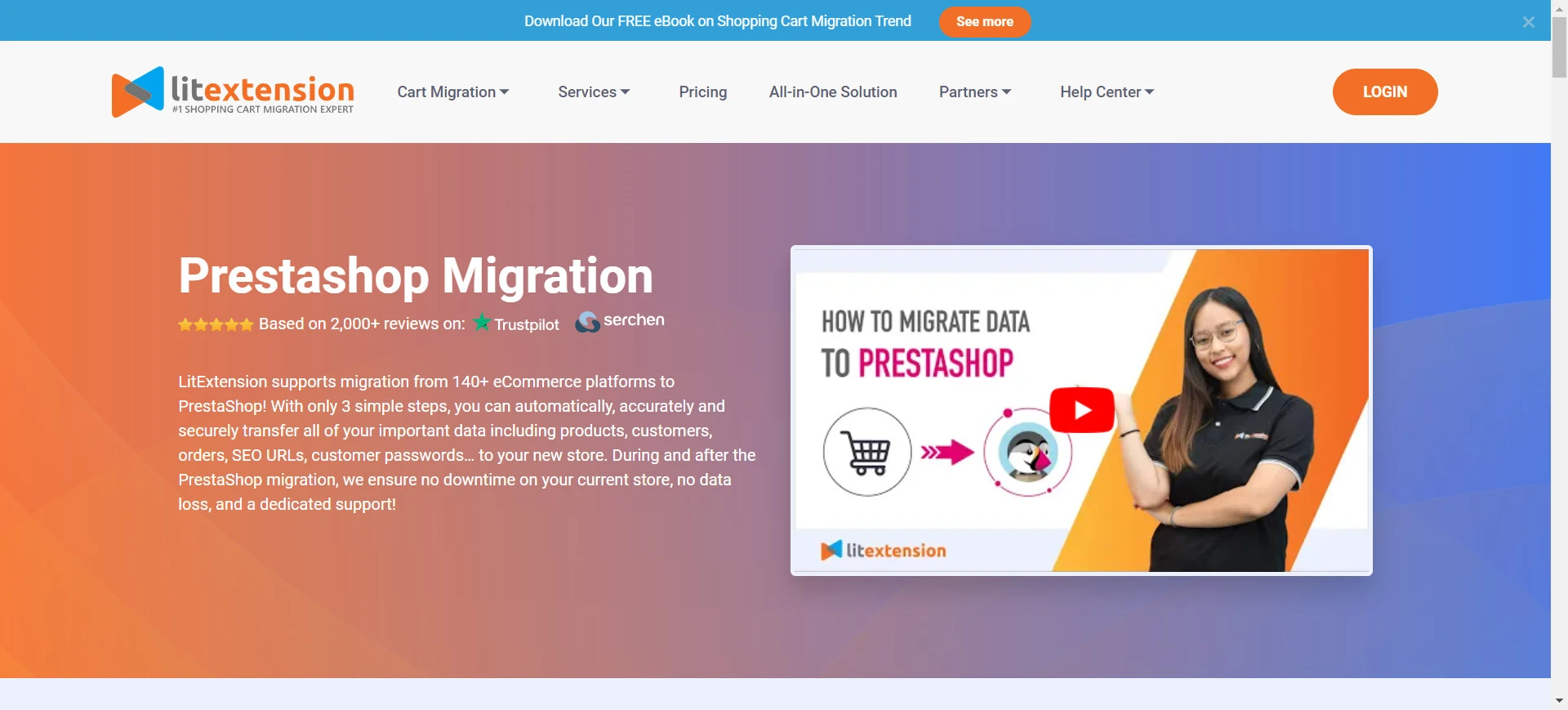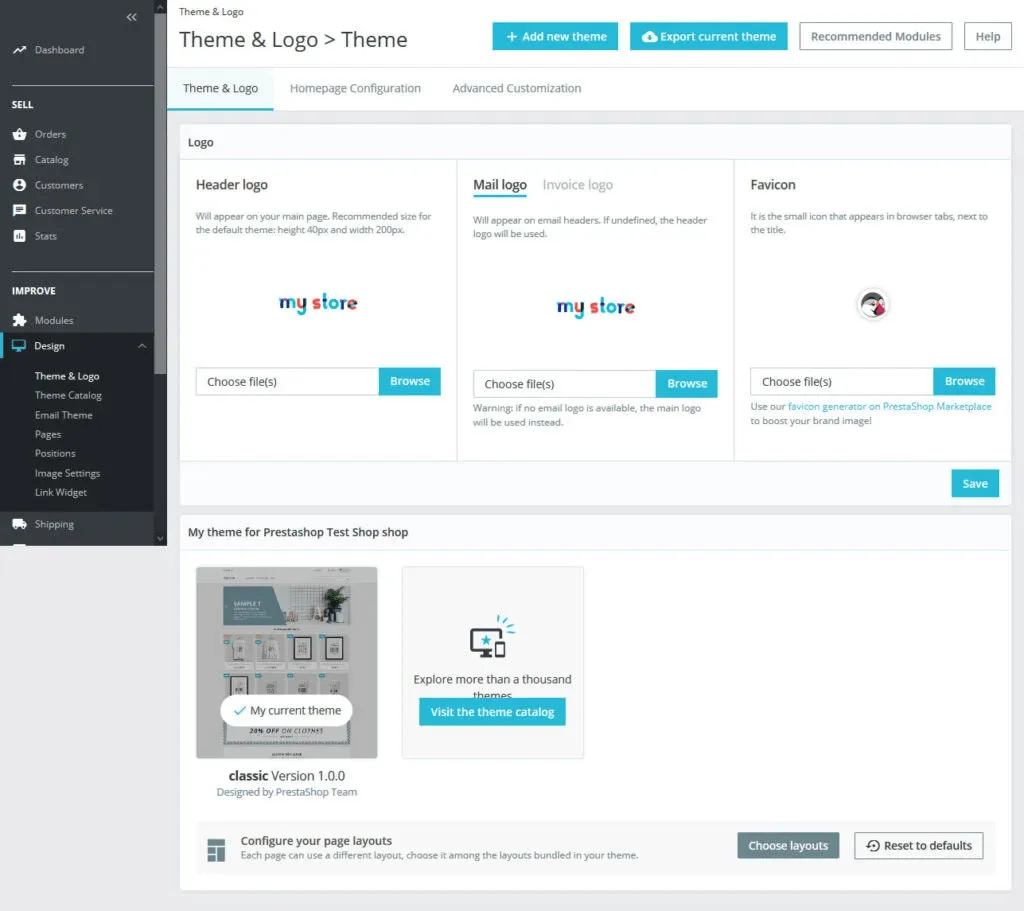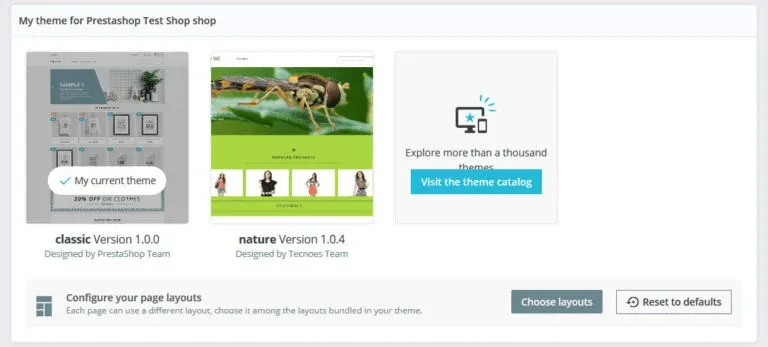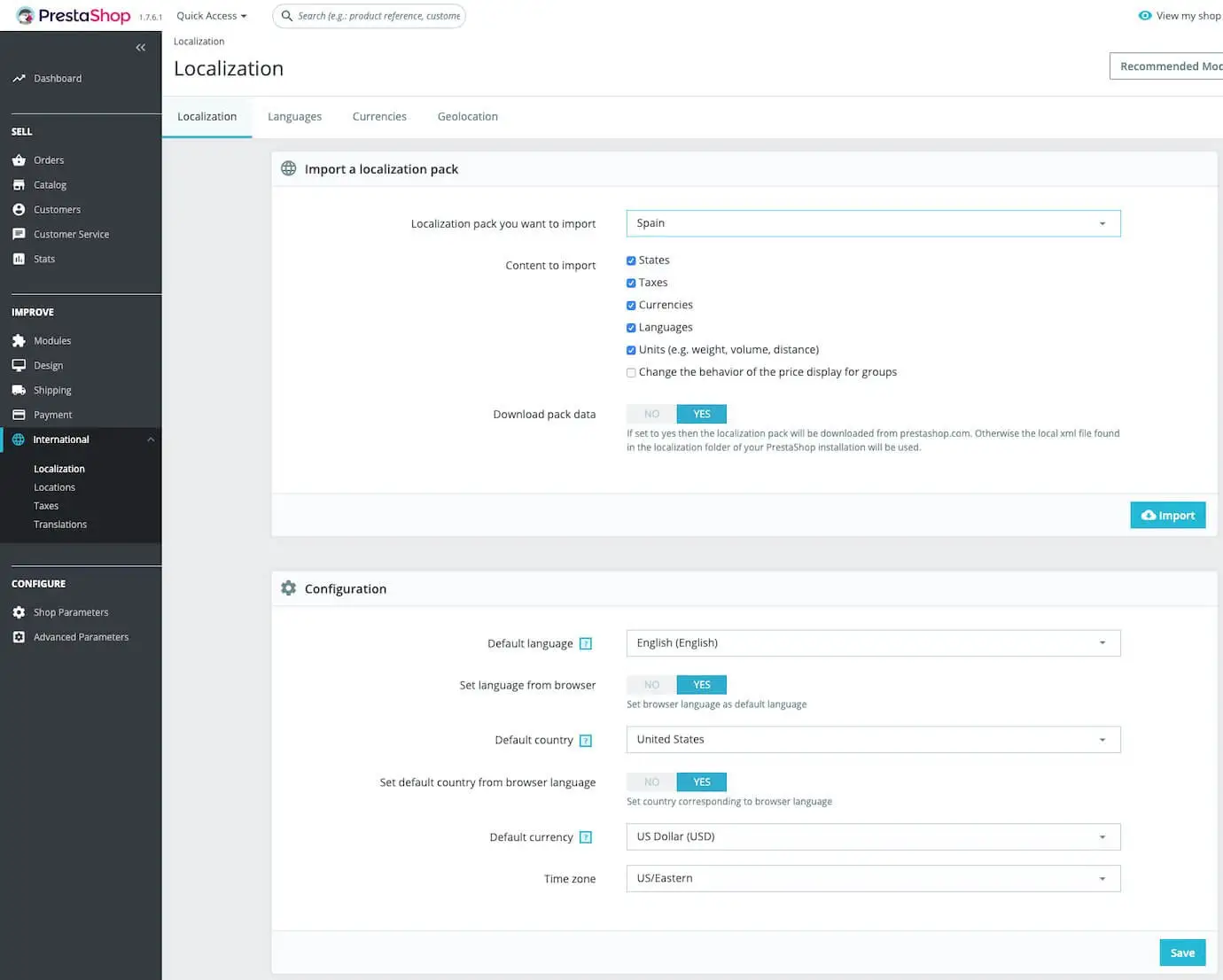If your store is growing exceptionally and outgrows your current eCommerce platform, it may be time for a change. Well, migrating to PrestaShop is a no-brainer. But if you have no previous experience, a PrestaShop migration checklist is necessary to keep you on the right path.
And we are here to give you exactly that! In this PrestaShop migration checklist, we will go through all you need to perform a risk-free and error-free switch to PrestaShop:
- PrestaShop migration overview;
- All the essential steps before migrating to PrestaShop?
- What to do before the PrestaShop migration?
- Post-migration activities needed to ensure a smooth migration result
Without further ado, let’s dive in!
An Overview Of PrestaShop Migration
PrestaShop migration is a process of transferring all data from your current eCommerce platform to PrestaShop. Depending on each store, the data can be products, orders, customers, or additional attributes like product reviews, taxes, or even custom store configurations. Adding to that, there are various methods to perform PrestaShop migration. You can do it manually, hire a PrestaShop expert, or use reputed migration services like LitExtension.
All in all, migrating to PrestaShop can be a complex process, so having a well-structured PrestaShop migration checklist is essential. A good enough checklist will keep you on the right track, reducing the chances of data loss or improperly migrated attributes and glitches.
Your Essential Checklist When Migrating to PrestaShop
After a successful PrestaShop migration, you’ll be able to keep scaling up your store using PrestaShop’s robust eCommerce features and extensive customizations.
However, due to the difference in the data infrastructure of your current platform and PrestaShop, after identifying the data for migration, you’ll need to map attributes between the two platforms and check your migrated data carefully after the migration for an error-free experience.
Doesn’t that sound like… a lot? Well, it doesn’t. As long as you follow our step-by-step PrestaShop migration checklist below, you should be doing perfectly fine.
Stage 1: Before the Migration
#1. Evaluate your current platform
Begin by taking a deep dive into your existing eCommerce platform. Assess everything from its layout, and user interface, to how it handles inventory and customer data.
For instance, if you’re using a platform like WooCommerce, note features like its product categorization, eCommerce functionality, cross-channel integrations, etc.
Understanding these details will help you identify what functionalities you need to replicate or improve in PrestaShop. Also, examine any custom themes, third-party apps, or special integrations you’re using. This evaluation will help you prepare a more tailored migration checklist that addresses your specific concerns.
#2. Define your migration goals
After evaluating your current platform, you need to set clear goals for migrating to PrestaShop.
Do you simply want to have a more intuitive dashboard, leverage PrestaShop’s robust analytics tools for better data-driven decisions, or expand your store’s capabilities with PrestaShop’s diverse range of modules and themes?
For example, if your current platform limits your product display options, one goal could be to utilize PrestaShop’s flexible product presentation features.
#3. Back up your existing data
In case you mess up your data during the migration process, the next thing to do in this PrestaShop migration checklist is back up your store’s important data, including:
- Products: Details like names, descriptions, prices, and images. For instance, if you sell handmade jewelry, ensure all your unique product descriptions and images are securely backed up.
- Customers: Essential information such as contact details, purchase history, and preferences. This data is key to maintaining and enhancing relationships with your customers post-migration.
- Orders: Comprehensive records of past and present transactions.
- Store settings: This includes your current theme, SEO settings, and any custom code. If you’ve tailored your checkout process, this configuration is crucial to back up.
- External integrations: Details of all third-party services you’re using, such as payment gateways, reviews, etc.
Most platforms allow merchants to export the mentioned data types into CSV files. So remember to back up all your data and save them securely on your PC.
#4. Set up a basic PrestaShop store
Afterward, let’s lay the first brick for the PrestaShop migration checklist by setting up all the fundamentals of your PrestaShop store.
Here’s a list of things that need to be done:
- Choose a hosting provider that supports PrestaShop and meets your store’s needs in terms of traffic and size.
- Install PrestaShop.
- Fill in your store’s primary information – name, currency, language, etc. If you’re a local retailer in Spain, for example, you’d set Spanish as the default language.
Check out our bite-sized tutorial on setting up a PrestaShop store properly before scrolling any down further.
Stage 2: During the Migration
#5. Identify migrated data
As you embark on the migration process, it’s vital to pinpoint the data that will be moved to your new PrestaShop platform. Common data types include:
- Products: Ensure you transfer every detail of your products, including names, descriptions, prices, and images. For example, if your store sells various types of electronics, it’s important to include all the specifications and images for each item.
- Customer information: This includes customer names, email addresses, shipping addresses, and their order history. Accurately migrating this data is essential to maintain good relationships with your customers post-migration.
- Order history: Complete records of past purchases are important for both maintaining customer service standards and for your own records.
- Content pages: Pages like your blog, ‘About Us’, and FAQs are important for customer engagement and should be included in the migration if you have any.
- Custom settings: If you have unique store configurations, such as multilingual options or specific shipping rules, ensure these are also migrated to maintain the store’s functionality and identity.
#6. Decide a migration method
Selecting the right method for migrating your data is the next significant decision you should make in the PrestaShop migration checklist. Consider the size and complexity of your store to determine the best approach:
- CSV file import: This method involves exporting data to CSV files and then importing them into PrestaShop. It works well for basic data but may not be suitable for complex data sets.
- Hiring a PrestaShop expert: For stores with intricate data or those who prefer expert assistance, hiring a PrestaShop professional is advisable. They can handle complex migrations efficiently.
- Using LitExtension’s migration services: Yes, besides the manual method and hiring a PrestaShop expert, a large number of big stores with extensive databases choose us.
With 10+ years of dealing with 140+ eCommerce platforms, we can migrate data from any of your current platforms to PrestaShop seamlessly, with the utmost security.

We offer a PrestaShop automatic migration tool, which is more than enough for most stores. However, if you need a more tailored migration experience, you can try our All-in-One migration package and let a Personal Assistant take the heavy lifting off your plate.
#7. Import data to PrestaShop
After selecting your migration method, it’s time to start the PrestaShop migration.
If you’re handling the migration manually or using CSV files, it’s recommended to begin with product data, followed by customer information, and end with order histories. This ensures a smooth transition and proper organization in your new PrestaShop store.
If you choose LitExtension’s migration services, just follow our PrestaShop migration guide for detailed instructions.
#8. Review the results
Once the migration is complete, it’s crucial to conduct a thorough review of your new PrestaShop store. This includes checking each product listing, verifying customer accounts, and reviewing order histories to ensure accuracy and completeness.
For instance, if you offer personalized products, confirm that all customization options are correctly displayed and functional.
Stage 3: After the Migration
After you have transferred your data, the PrestaShop migration checklist isn’t over yet. Let’s set up your PrestaShop store after the migration.
#9. Customize the theme
Now that you have migrated all your important data to PrestaShop, the first thing to do is choose and customize a PrestaShop theme. A well-customized web store will help you stand out from the crowd and convert your customers better.
After you have settled down on a fantastic theme, follow the steps below to apply the new theme to your PrestaShop store:
- Go to “Design” and then “Theme & Logo” in your PrestaShop dashboard.
- Click on “Add new theme” at the top of the page.
- You have three options to add a theme: upload a zip file, import from a URL, or FTP the theme into your PrestaShop installation’s themes folder.

- Once uploaded or imported, go to the “Theme and Logo” section, where you’ll see a list of available themes.
- Select your desired theme and click “Use this theme” to activate it.

#10. Configure shipping settings
Next, let’s tick another box in your PrestaShop migration checklist – configure your store’s shipping settings. This generally includes:
- Setting up shipping carriers: Add different carriers offering various shipping rates and delivery times.
- Defining shipping locations and costs: Establish different shipping zones and assign specific carriers to these zones. You can set the shipping costs based on factors like weight and price or offer free shipping.
- Including handling charges: Decide whether to add additional handling fees to the shipping costs.
- Specifying size and weight dimensions: Enter accurate size and weight for each product, as these can influence shipping costs.
#11. Set up taxes and localization
To ensure your online store caters to international customers effectively, another thing you should do in this PrestaShop migration checklist is configure tax settings and adapt your store to various global regions.
Follow these steps in your PrestaShop dashboard:
- Access Localization Settings: From your main dashboard, go to “International” and select “Localization.”

Afterward, you will be able to add a localization pack, set units according to local standards, adjust basic settings, and manage advanced options.
#12. Add payment methods
Next, let’s keep ticking your PrestaShop migration checklist by integrating payment methods into your store. For payments, you’ll have hundreds of options, including bank transfers, credit cards, digital wallets, buy now, pay later, and more.

#13. Install extensions
Though PrestaShop’s built-in features are great, you need extensions to extend your store’s functionalities. Therefore, choosing and selecting necessary extensions is vital in a proper PrestaShop migration checklist.
From our experience, here are some types of PrestaShop extensions you’d love to try:
- SEO tools: Enhance your store’s visibility on search engines, optimize content, and improve rankings.
- Payment gateways: Leverage PrestaShop payment add-ons such as PayPal Official Module – PrestaShop to offer various payment options to cater to different customer preferences, ensuring secure and efficient transactions.
- Shipping and logistics: Integrate with multiple carriers to offer tracking capabilities and manage logistics efficiently.
- Analytics and reporting: Gain insights into customer behavior, sales trends, and website performance to make informed decisions with add-ons.
- Marketing and promotions: Consider installing PrestaShop add-ons for email marketing, social selling, and cross-selling for creating promotional campaigns to attract and retain customers.
- Customer service: Live chat, helpdesk, and customer feedback tools to improve customer support and satisfaction.

#14. Place test orders
One of the last homework assignments you need to finish in the PrestaShop migration checklist is placing test orders.
Unless you want your migration effort to go in vain, test your store thoroughly to ensure that your customers can make it all the way to the thank-you page without any glitches or confusion.
#15. Transfer your domain
Last but not least, remember to transfer your domain to PrestaShop to preserve all your hard-earned reputation, traffic, and SEO juices.
👉 Check out our detailed guide (with screenshots) on How to switch domain name after data migration, curated by LitExtension’s migration experts.
Frequently Asked Questions
[sp_easyaccordion id=”70623″]
Final Thoughts
All in all, PrestaShop’s extensive eCommerce features and extensive customization can help you break through the limits if you are “brave” enough to take action – performing PrestaShop migration.
And with our PrestaShop migration checklist from LitExtension’s experts, the question now shouldn’t be “Why”, it’s “Why not?”
By the way, don’t forget to discover LitExtension’s blog or join our engaging Facebook Community to get insider eCommerce trends, tips, and tricks.